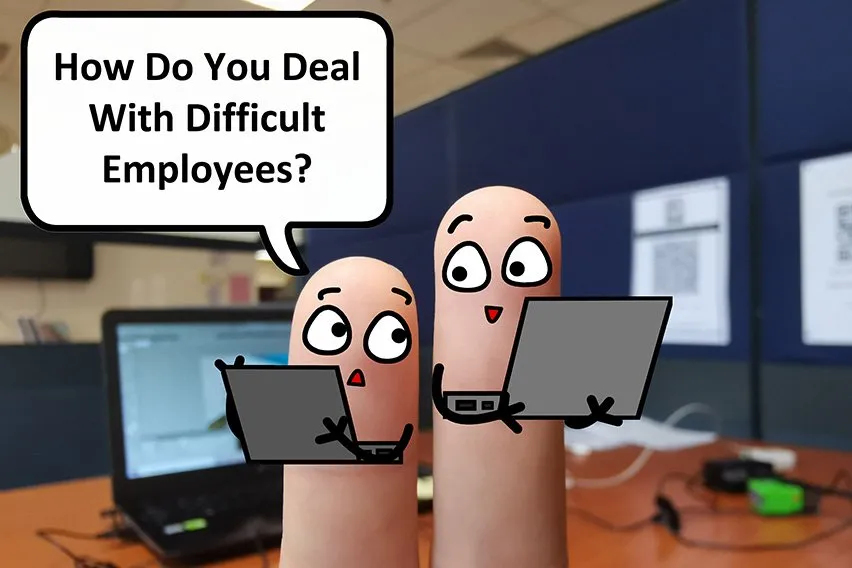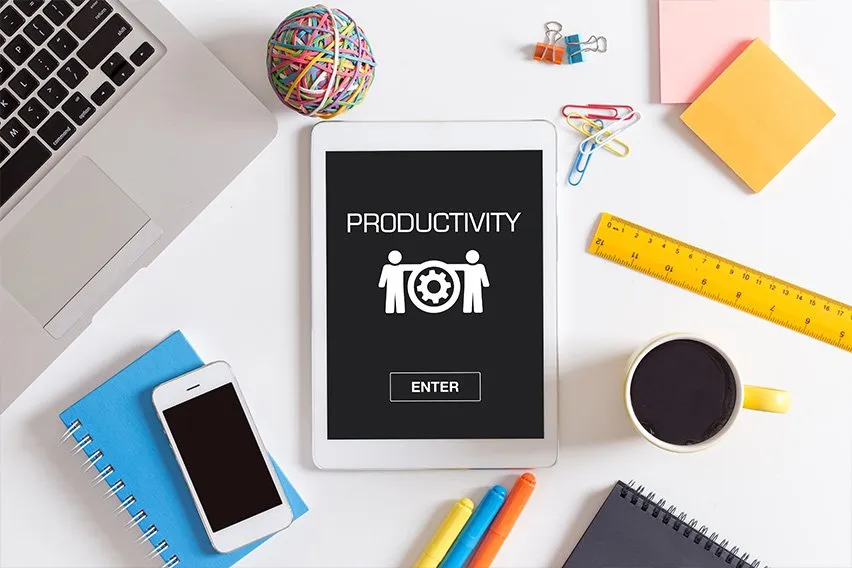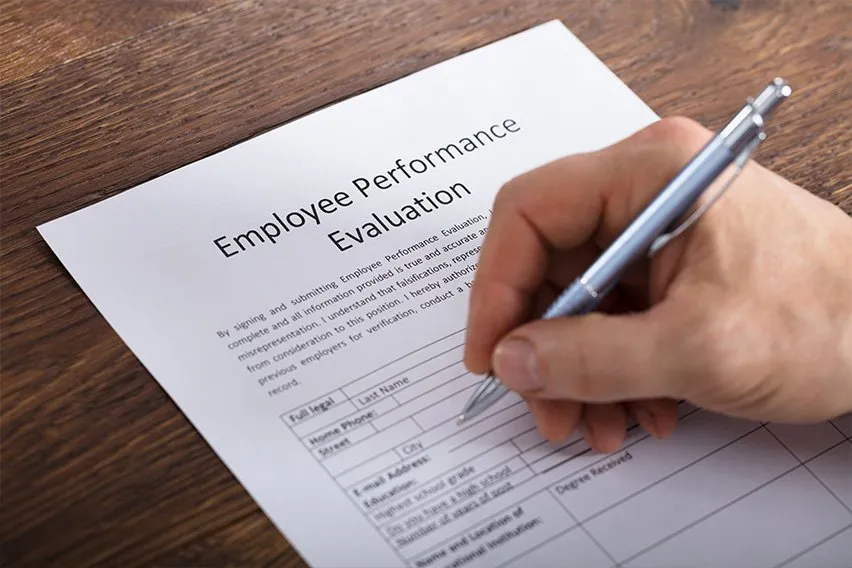How to Deal with Difficult Employees: 10 Tips to Improve Workplace Performance

When a small business has an employee who is difficult to work with, it can drain productivity and create a hostile work environment. Business owners and managers need to demonstrate leadership and deal with difficult employees directly, discussing the behavioral and performance issues and creating a clear plan moving forward to address the issues. Managers should monitor the progress of difficult employees and if the performance doesn’t improve with feedback and resources, you may need to fire the problem employee for the sake of your business’s performance and the morale of other workers.
Read these topics for actionable tips on how to deal with difficult employees:
10 Ways to Deal with Difficult Employees
How to Handle a Disruptive Employee
How to Deal with an Insubordinate Employee
10 Ways to Deal with Difficult Employees
Addressing issues with a difficult employee can be stressful and awkward. Follow these ten tips for managing difficult employees to make the process easier and increase your chances of improving the situation:

Critique Behavior, Not People
It’s important that you don’t make the conversation overly personal or emotional. The end goal is to reach a solution to the problem, not to spark a confrontation. To do that, it’s important to focus specifically on inappropriate or undesirable behavior the employee has demonstrated rather than attack them personally. There may not be negative intentions behind their negative behavior. It might stem from confusion, fear or personal problems that you aren’t aware of.
Listen to Feedback
You should have a two-way conversation with the challenging employee. Listen to their feedback so you can understand where the problem lies and acknowledge any workplace issues that might be contributing to the negative behavior. Sometimes, just feeling listened to is enough for the employee to feel better and improve their behavior.
Give Clear Direction
Giving tough feedback can be a difficult task for managers, but it’s important that you give clear and specific examples of the negative behavior and explain why it’s inappropriate and how it has to change. Focusing on specific examples can help lower the employee’s defensiveness and offer useful information that can help them improve their workplace performance.
Document Problematic Behavior
Whenever you witness poor performance or troubling behavior, write it down in detail so you have a record of what happened and be sure to include the date. Proper documentation not only helps you remember and refer to specific events, it also protects your company in the event that the employee is let go and decides to sue the business for wrongful termination.
Consult the HR Department
Schedule meetings with the human resources team to discuss the situation. They can give advice on how to deal with the poor behavior, help you understand the documentation you need and provide a course of action for addressing the issue with the employee. HR will understand all the company policies and processes for handling difficult employees and terminating their employment, if necessary.
Work Together Toward a Solution
The ideal result when you discuss a difficult employee’s behavior with them is that the two of you work together to develop a solution you both agree on. Discuss the negative behavior, what the appropriate behavior looks like and then find out what the employee needs from you to improve. Agree upon a solution to the issue.
Write Down Expectations
Detail your expectations for what needs to improve and set a timeline for improvement. Write down a clear plan of action with a specific timeline and evaluation framework for measuring success. Sign the plan and have the employee sign it as well. You should both keep a copy of the document so the employee can use it to enact the plan and you can evaluate performance moving forward.
Set Specific Consequences
It’s possible that your plan for improvement with a difficult employee will fail if you don’t set clear consequences if the behavior doesn’t change within the agreed upon timeframe. Consequences can include a formal written warning, not being eligible for promotions or bonuses and in more severe situations, termination of their employment. Employees likely won’t change their behavior unless continuing it will affect them negatively.
Monitor Progress
Give your employee the time needed to correct their behavior. During that time, monitor their progress and make note of any issues or relapses. Check in as frequently as needed to get a better sense of how they’re progressing with the agreed-upon plan and intervene if they get off track. After the timeline from your plan has passed, schedule a full in-person evaluation to discuss how the situation has progressed.
Recognize a Hopeless Situation
While the goal is to improve the employee’s behavior so that your team can be more happy and productive together, realistically there will be times when that isn’t possible. If your previous interventions haven’t had the desired effect and the staff member is unwilling to change their behavior, you need to follow your company’s termination procedure and cut your losses.

How to Handle a Disruptive Employee
To handle a disruptive employee, it’s important that managers speak directly to the person about the specific behavior that’s unacceptable. Explain how their actions need to change and what the consequences will be if they don’t alter their behavior. If you can’t immediately fix the problem or terminate the employment contract, consider separating the disruptive employee from the rest of the team, to keep interruptions to a minimum. Disruptive behavior can spread, according to the Harvard Business Review. Removing a toxic employee from the rest of the team can help contain the behavior and keep it from catching on with other workers.
Here are some tips for separating a disruptive employee from the team:
- Re-arrange desks in the office
- Schedule fewer team meetings
- Encourage more work from home days
- Reassign projects to remove the disruptive worker from teams
How to Deal with an Insubordinate Employee
Insubordinate employees can disrupt the workplace and kill productivity, so managers need to learn to deal with them effectively. Here are some tips for dealing with an insubordinate employee:
- Don’t take the behavior personally, to help avoid becoming angry and frustrated
- Stay professional and don’t lose your temper with the employee
- Document the details of the situation
- Try to get to the root cause of the behavior and address it directly
- Don’t let the behavior stop you or your team from doing your work
- Consult with the HR team to get advice on how best to handle the problem
RELATED ARTICLES
 How to Gain Respect from Employees: Leadership Tips for Managers
How to Gain Respect from Employees: Leadership Tips for Managers 9 Ways to Increase Productivity at Work
9 Ways to Increase Productivity at Work How to Train New Employees?
How to Train New Employees? How to Evaluate an Employee: A Performance Review Checklist
How to Evaluate an Employee: A Performance Review Checklist How to Find Investors for Small Business: Top 7 Ways for a Startup to Get Capital
How to Find Investors for Small Business: Top 7 Ways for a Startup to Get Capital